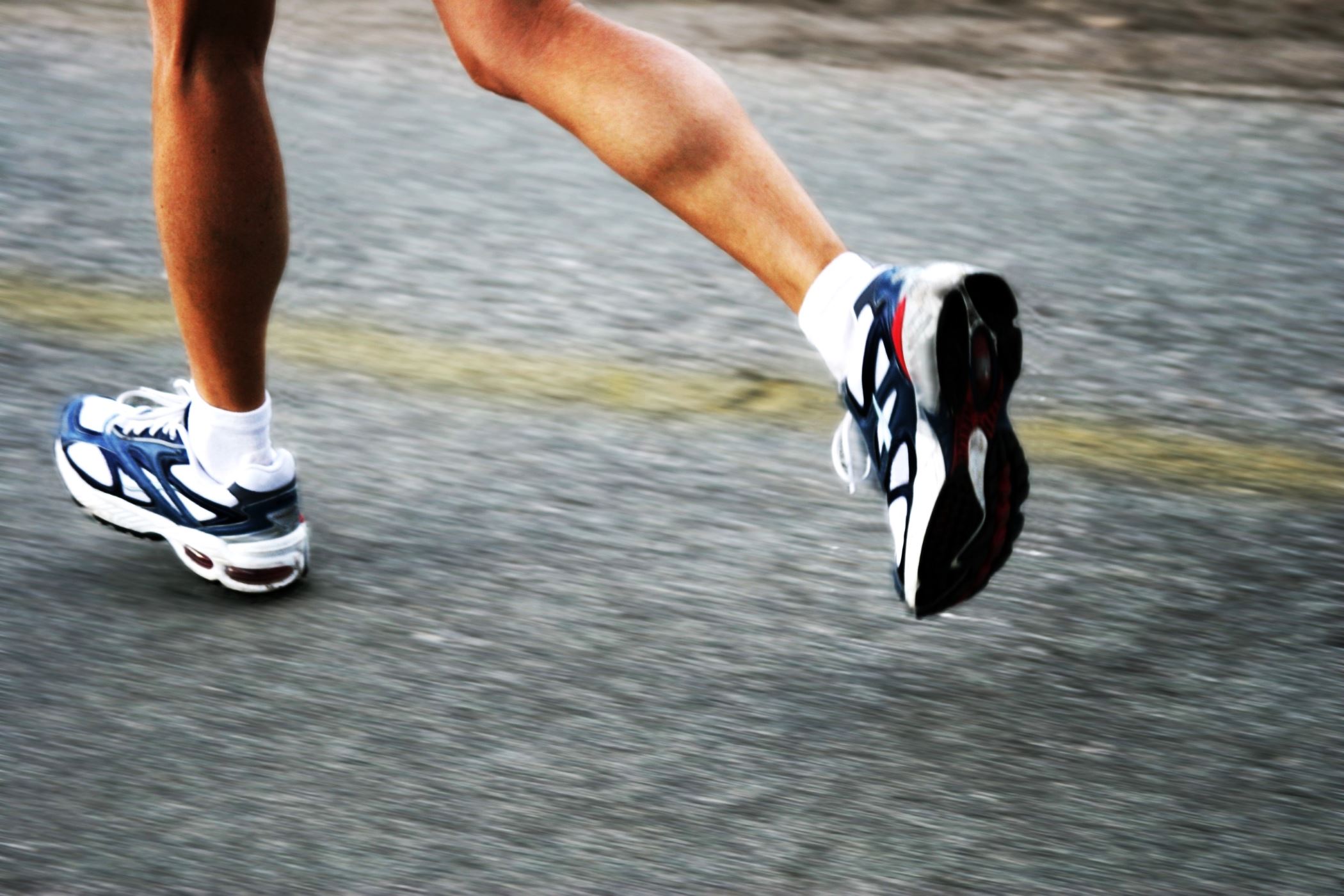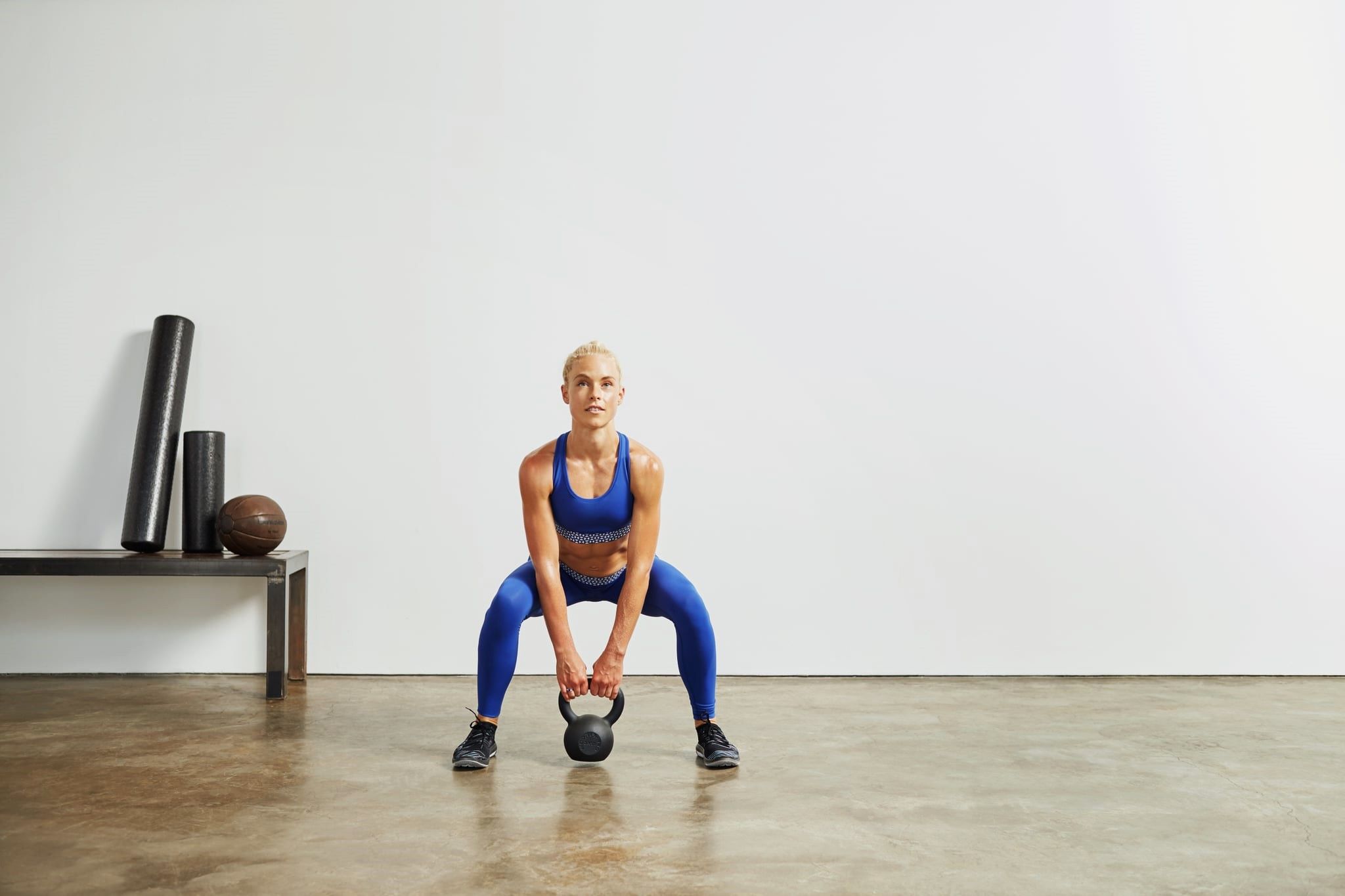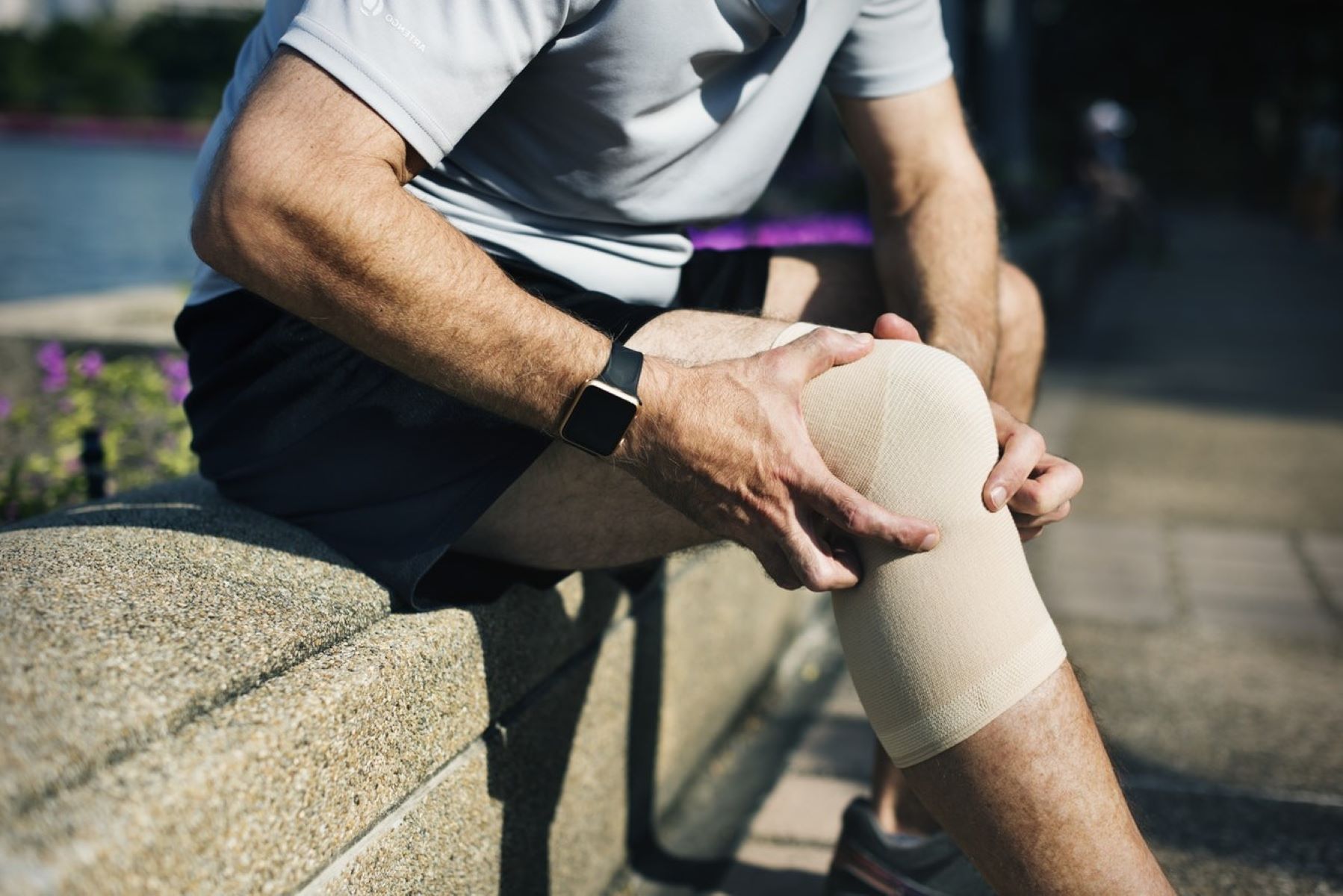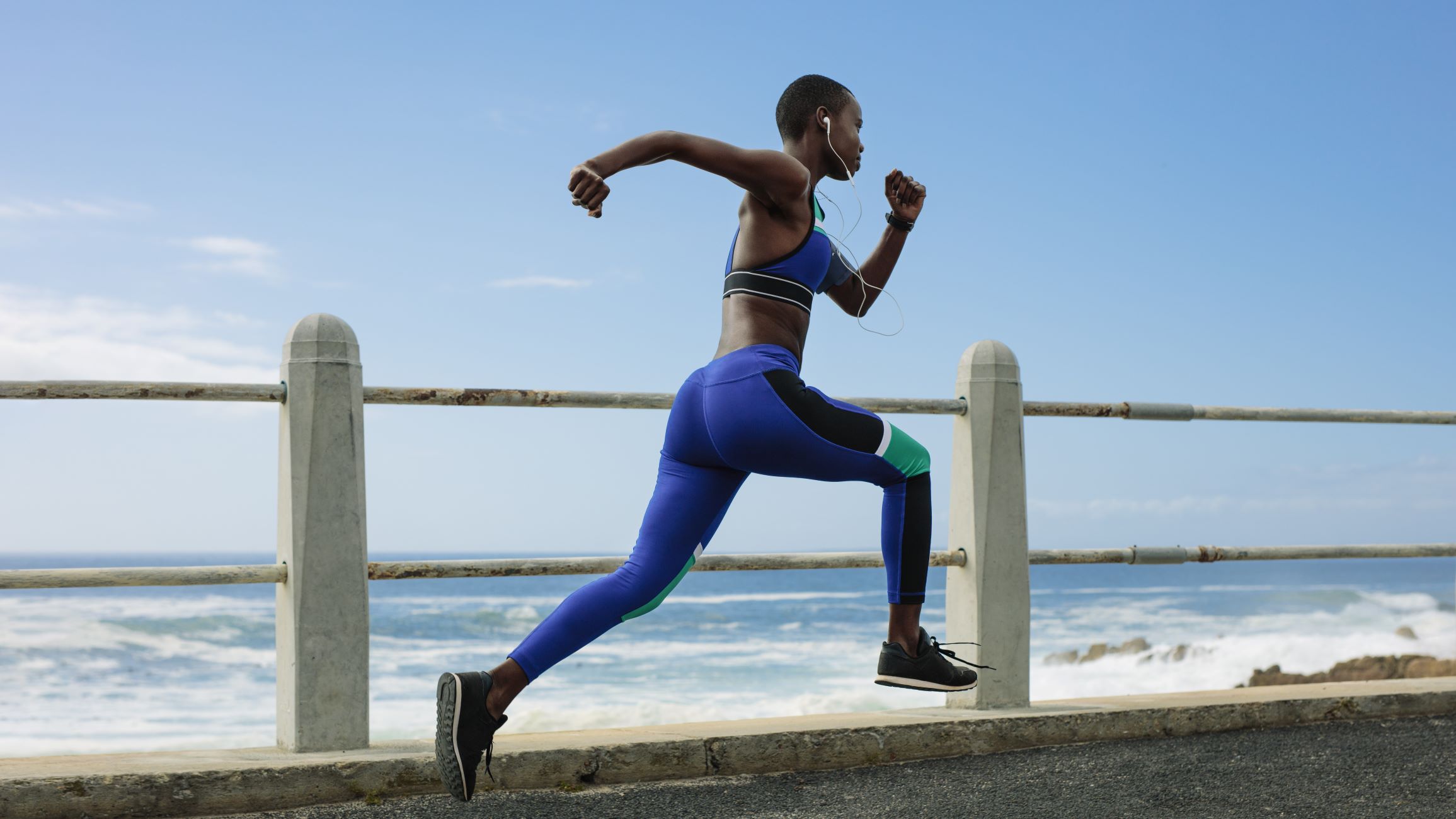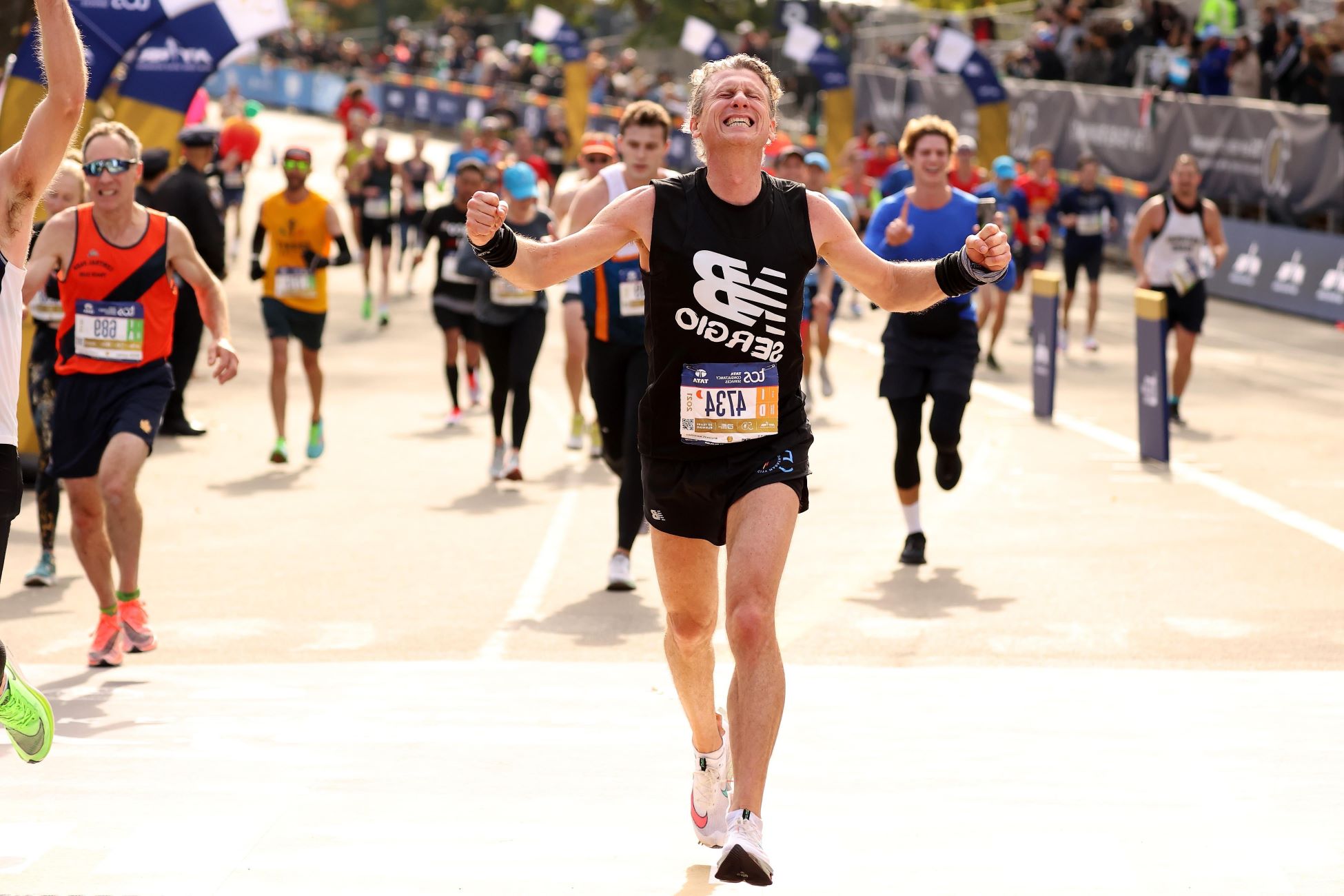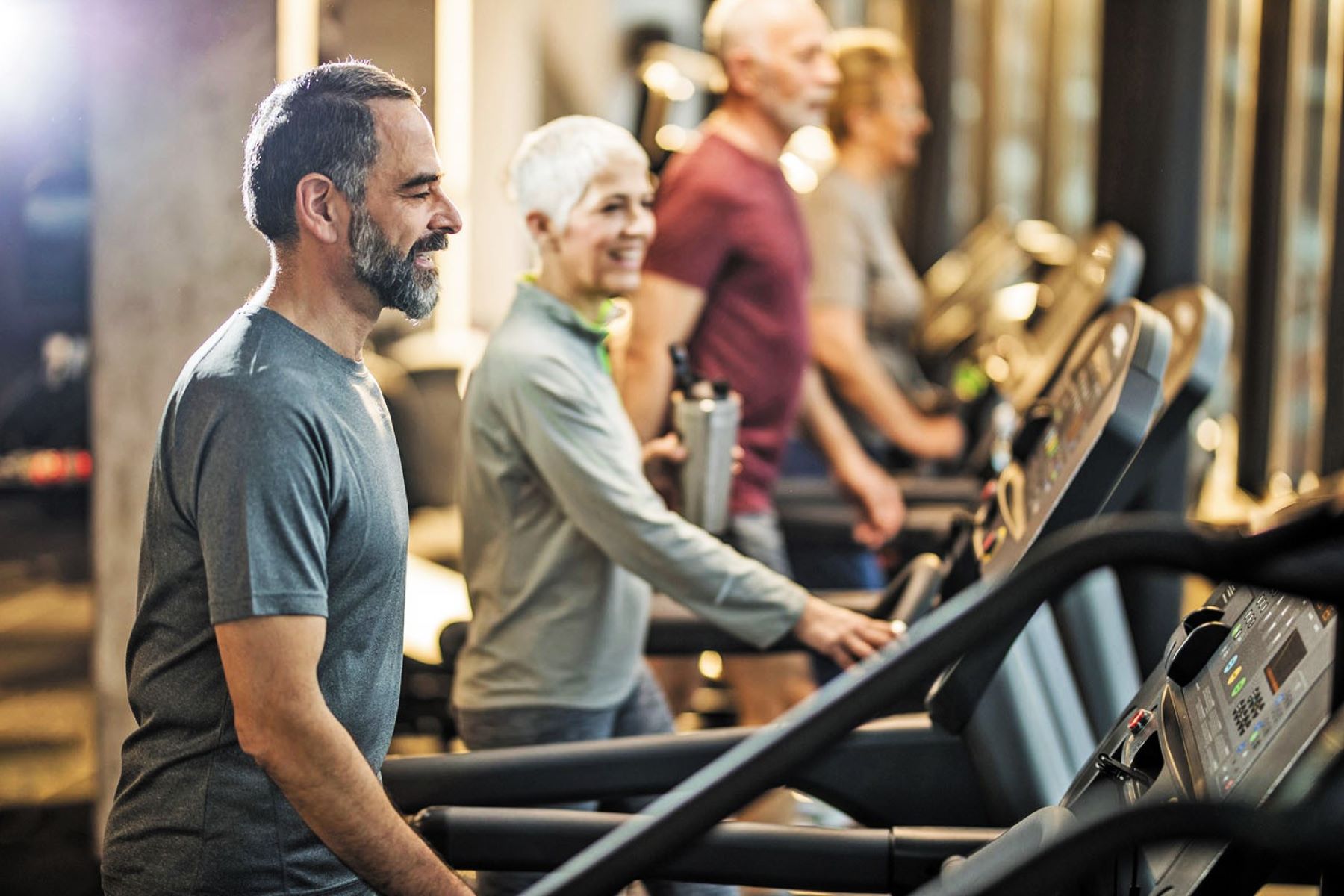Home>Training & Techniques>The Impact Of Bent Arms On Running Performance
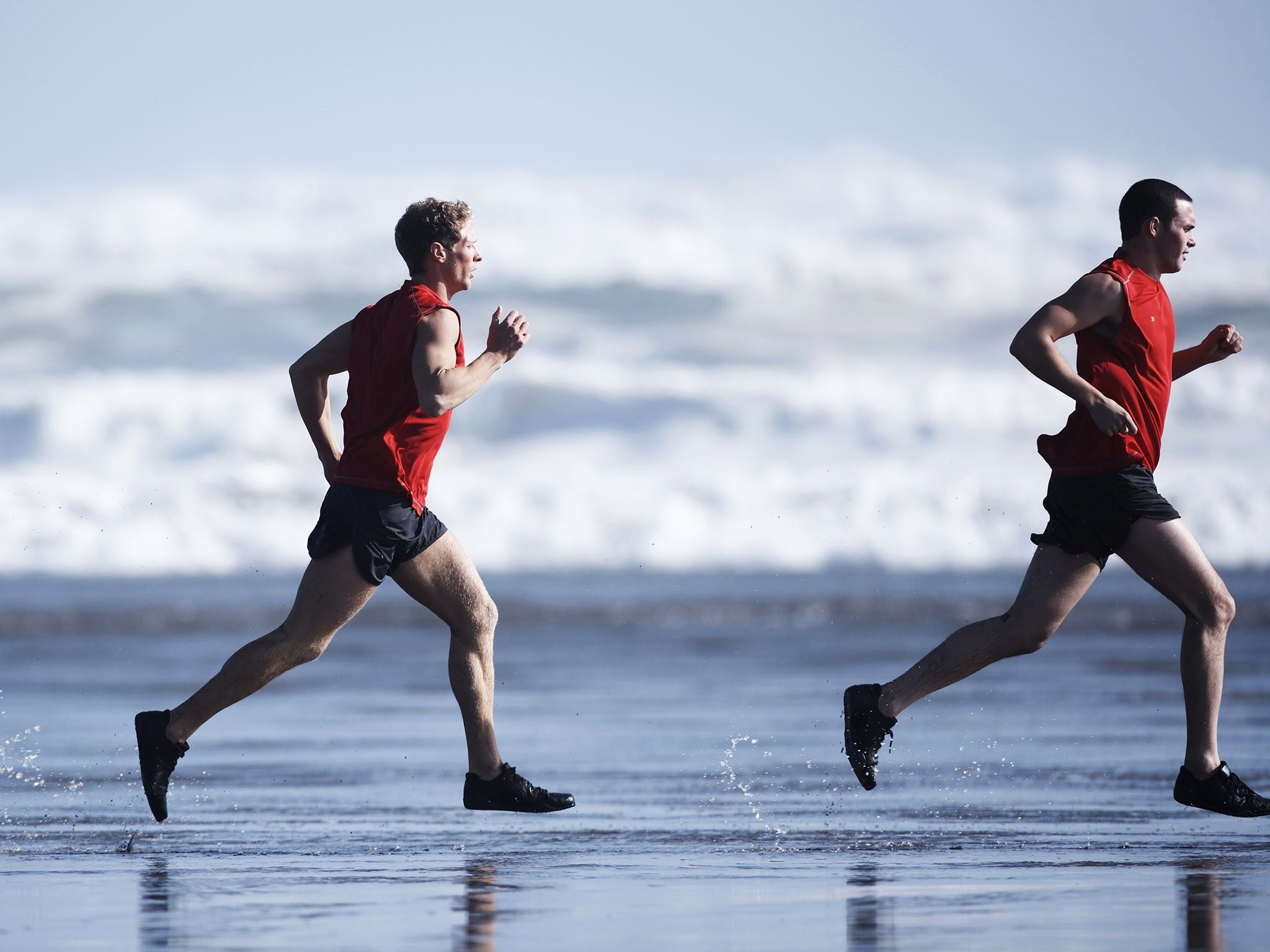

Training & Techniques
The Impact Of Bent Arms On Running Performance
Published: March 1, 2024
Discover how training and techniques can optimize running performance by understanding the impact of bent arms. Learn how to improve your form and enhance your running efficiency.
(Many of the links in this article redirect to a specific reviewed product. Your purchase of these products through affiliate links helps to generate commission for Therunningadvisor.com, at no extra cost. Learn more)
Table of Contents
Introduction
The way we move our arms while running may seem like a secondary consideration compared to the movement of our legs, but the truth is that arm positioning plays a crucial role in running performance. The position of our arms can impact our running biomechanics, energy expenditure, and overall efficiency. Understanding the significance of arm positioning in running can provide valuable insights for both novice and experienced runners looking to optimize their performance.
In this article, we will delve into the biomechanics of bent arms in running and explore how this seemingly simple aspect of running form can have a profound impact on overall performance. By examining the role of bent arms in propulsion, the effect of arm positioning on oxygen consumption, and the implications for running efficiency, we aim to shed light on the importance of this often overlooked aspect of running technique.
As we unravel the complexities of arm positioning in running, we will also provide practical tips for improving arm position to help runners enhance their performance and reduce the risk of injury. By the end of this article, readers will have a deeper understanding of the role of bent arms in running and how they can leverage this knowledge to optimize their running technique.
The biomechanics of running are multifaceted, and every aspect of our form, including the positioning of our arms, can influence our overall performance. With this in mind, let's embark on a journey to uncover the impact of bent arms on running performance and equip ourselves with the knowledge to elevate our running experience.
The Biomechanics of Bent Arms in Running
The biomechanics of running encompass a complex interplay of muscular coordination, joint movements, and energy transfer throughout the body. While the lower body's role in propulsion and stability is widely acknowledged, the significance of arm positioning in running biomechanics is often underestimated. The position of the arms during running, particularly the degree of elbow flexion, can significantly influence overall running performance.
When we examine the biomechanics of bent arms in running, we uncover a fundamental aspect of human locomotion. The natural swinging motion of the arms during running serves multiple purposes, including balance, stability, and energy conservation. The degree of elbow flexion, or the angle at which the arms are bent, directly impacts the efficiency of this swinging motion and its contribution to forward propulsion.
During the swing phase of running, the arms act as counterbalances to the movement of the legs, helping to stabilize the body and maintain a smooth, coordinated gait. The positioning of the arms, specifically the degree of bend at the elbows, influences the magnitude and direction of the forces generated during each arm swing. Optimal arm positioning allows for efficient energy transfer from the upper body to the lower body, contributing to a more fluid and powerful running stride.
Furthermore, the biomechanics of bent arms in running extend beyond mere propulsion. The positioning of the arms can also affect the overall stability and balance of the runner, particularly during high-speed or uneven terrain running. By maintaining a slight bend in the arms and coordinating their movement with the legs, runners can enhance their overall stability and reduce the risk of excessive lateral movement, thereby conserving energy and minimizing the potential for injury.
In essence, the biomechanics of bent arms in running are intricately linked to the coordination of movement, energy transfer, and stability throughout the body. Understanding the biomechanical principles underlying the positioning of the arms during running provides valuable insights into the intricate dynamics of human locomotion and underscores the significance of this often overlooked aspect of running technique.
The Role of Bent Arms in Propulsion
The role of bent arms in propulsion during running is a critical yet often underestimated aspect of running biomechanics. The positioning of the arms, particularly the degree of elbow flexion, directly influences the generation and transfer of propulsive forces, ultimately impacting the efficiency and power of the running stride.
When the arms are bent at an optimal angle during the swing phase of running, they act as dynamic levers that contribute to forward propulsion. As the arms swing in coordination with the legs, the degree of elbow flexion determines the magnitude and direction of the forces generated. This synchronized movement allows for the transfer of energy from the upper body to the lower body, effectively propelling the runner forward with each stride.
Optimal arm positioning, characterized by a moderate degree of elbow flexion, facilitates the efficient transmission of propulsive forces generated by the upper body to the lower body. This coordinated transfer of energy enhances the overall power output of the running stride, enabling runners to maintain momentum and speed while conserving energy.
Furthermore, the role of bent arms in propulsion extends beyond the direct generation of propulsive forces. The swinging motion of the arms, when appropriately positioned, contributes to the rotational dynamics of the body, aiding in the generation of torque and angular momentum. This rotational energy, harnessed through the coordinated movement of the arms and legs, further amplifies the propulsion generated during each stride, resulting in a more dynamic and powerful running gait.
In essence, the role of bent arms in propulsion is intricately linked to the generation, transfer, and amplification of propulsive forces during running. By maintaining an optimal degree of elbow flexion and coordinating the movement of the arms with the legs, runners can harness the kinetic energy generated by the upper body to enhance the propulsion and efficiency of their running stride.
Understanding the pivotal role of bent arms in propulsion provides valuable insights for runners seeking to optimize their running technique and maximize their performance. By leveraging this understanding to refine arm positioning and coordination, runners can unlock the full potential of their biomechanics, ultimately enhancing their running experience.
The Effect of Bent Arms on Oxygen Consumption
The effect of bent arms on oxygen consumption during running is a crucial aspect of biomechanics that directly influences the metabolic demands placed on the body. The positioning of the arms, particularly the degree of elbow flexion, plays a significant role in determining the energy expenditure and oxygen utilization associated with running.
When the arms are bent at an optimal angle during the running stride, they contribute to the overall efficiency of movement, thereby impacting oxygen consumption. The coordinated swinging motion of the arms, characterized by a moderate degree of elbow flexion, facilitates a smoother and more controlled running gait. This controlled movement pattern reduces unnecessary energy dissipation and minimizes the metabolic cost of running, ultimately leading to lower oxygen consumption.
Furthermore, the positioning of the arms directly influences the overall stability and balance of the runner, which in turn affects the energy demands and oxygen consumption. By maintaining a slight bend in the arms and synchronizing their movement with the legs, runners can enhance their overall stability and minimize excessive lateral movement. This enhanced stability reduces the energy expenditure associated with maintaining balance, allowing for more efficient oxygen utilization during running.
Additionally, the role of bent arms in oxygen consumption extends to the coordination of muscle activation and energy transfer throughout the body. Optimal arm positioning facilitates the engagement of synergistic muscle groups, leading to a more harmonized and energy-conserving running stride. This coordinated muscle activation pattern reduces the overall metabolic demands placed on the body, resulting in improved oxygen efficiency during running.
In essence, the effect of bent arms on oxygen consumption underscores the intricate relationship between arm positioning, energy expenditure, and metabolic efficiency during running. By maintaining an optimal degree of elbow flexion and coordinating the movement of the arms with the legs, runners can minimize unnecessary energy dissipation, enhance stability, and optimize muscle activation, ultimately leading to improved oxygen utilization.
Understanding the impact of bent arms on oxygen consumption provides valuable insights for runners seeking to optimize their running technique and enhance their overall metabolic efficiency. By leveraging this understanding to refine arm positioning and coordination, runners can reduce the metabolic cost of running and improve their endurance, ultimately elevating their running performance.
The Impact of Bent Arms on Running Efficiency
The impact of bent arms on running efficiency is profound, influencing the overall effectiveness and economy of a runner's movement. The positioning of the arms, particularly the degree of elbow flexion, directly contributes to the optimization of running biomechanics, energy conservation, and performance enhancement.
Optimal arm positioning, characterized by a moderate degree of elbow flexion, plays a pivotal role in maximizing running efficiency. When the arms are appropriately bent during the running stride, they facilitate a smooth and coordinated movement pattern, minimizing unnecessary energy dissipation and enhancing the overall fluidity of the running gait. This controlled movement not only conserves energy but also reduces the risk of excessive muscular fatigue, allowing runners to sustain their performance over extended distances.
Furthermore, the impact of bent arms on running efficiency extends to the coordination of muscle activation and energy transfer throughout the body. By maintaining an optimal degree of elbow flexion and synchronizing the movement of the arms with the legs, runners can achieve a harmonized muscle activation pattern that minimizes energy wastage and maximizes the transfer of propulsive forces. This coordinated muscle activation contributes to a more efficient running stride, allowing runners to cover greater distances with reduced energy expenditure.
In addition, the positioning of the arms directly influences the overall stability and balance of the runner, which are essential components of running efficiency. When the arms are appropriately bent and coordinated with the leg movements, they act as dynamic stabilizers, minimizing excessive lateral movement and enhancing overall balance. This enhanced stability not only reduces the risk of energy-wasting movements but also promotes a more efficient transfer of energy from the upper body to the lower body, ultimately improving running efficiency.
Moreover, the impact of bent arms on running efficiency encompasses the reduction of aerodynamic drag, particularly during high-speed running. By maintaining a slight bend in the arms and positioning them close to the body, runners can minimize air resistance, allowing for smoother forward movement and improved efficiency, especially in sprinting and high-velocity running scenarios.
In essence, the impact of bent arms on running efficiency underscores the intricate relationship between arm positioning, energy conservation, stability, and performance optimization. By understanding and leveraging the significance of optimal arm positioning, runners can enhance their overall running efficiency, minimize energy wastage, and elevate their performance to new levels.
This comprehensive understanding of the impact of bent arms on running efficiency empowers runners to refine their arm positioning and coordination, ultimately unlocking the full potential of their biomechanics and achieving greater efficiency in their running endeavors.
Practical Tips for Improving Arm Position in Running
Improving arm position in running is a fundamental aspect of refining running technique and optimizing overall performance. By focusing on the positioning and coordination of the arms, runners can enhance their biomechanics, energy efficiency, and running economy. Here are practical tips for improving arm position in running:
-
Maintain Optimal Elbow Flexion: Aim to keep a moderate degree of elbow flexion, approximately 90 degrees, throughout the running stride. This optimal arm bend allows for efficient energy transfer and propulsion while minimizing unnecessary muscular tension.
-
Coordinate Arm Swing with Leg Movement: Ensure that the swinging motion of the arms is synchronized with the movement of the legs. The arms and legs should work in tandem, with the forward swing of one arm corresponding to the forward extension of the opposite leg.
-
Avoid Excessive Cross-Body Movement: Minimize excessive lateral movement of the arms across the body, as this can lead to energy wastage and disrupt the overall stability of the running gait. Focus on maintaining a forward-backward swinging motion rather than excessive side-to-side movement.
-
Relax the Shoulders and Hands: Keep the shoulders relaxed and avoid tensing the muscles in the upper body. Additionally, maintain a relaxed grip with the hands, allowing for a natural and fluid arm swing without unnecessary tension.
-
Engage Core Muscles for Stability: Utilize the core muscles to support the swinging motion of the arms, promoting overall stability and balance during running. A strong and engaged core can enhance the coordination of arm and leg movements.
-
Practice Arm Positioning Drills: Incorporate specific drills and exercises focused on arm positioning to develop muscle memory and reinforce optimal arm mechanics. These drills can include arm swings, posture-focused exercises, and coordination drills.
-
Seek Professional Guidance: Consider seeking guidance from a running coach or biomechanics expert to receive personalized feedback on arm positioning and running form. Professional insight can help identify specific areas for improvement and provide tailored recommendations.
-
Focus on Symmetry: Strive for symmetry in arm movement, ensuring that both arms contribute equally to the running stride. Address any asymmetries or imbalances in arm positioning through targeted exercises and mindful awareness during running.
By implementing these practical tips for improving arm position in running, runners can refine their technique, enhance running efficiency, and reduce the risk of injury. Consistent focus on arm positioning, coupled with mindful running practice, can lead to significant improvements in overall running performance.
Conclusion
In conclusion, the positioning of the arms, particularly the degree of elbow flexion, plays a pivotal role in shaping the biomechanics, energy expenditure, and overall efficiency of running. Throughout this exploration of the impact of bent arms on running performance, we have uncovered the intricate dynamics that underscore the significance of arm positioning in optimizing running technique.
From the biomechanical perspective, the coordination of arm movement with leg propulsion and the generation of propulsive forces highlights the essential role of bent arms in driving forward momentum. The controlled swinging motion of the arms, when appropriately positioned, contributes to the harmonized transfer of energy from the upper body to the lower body, ultimately enhancing the power and efficiency of the running stride.
Moreover, the effect of bent arms on oxygen consumption and metabolic efficiency underscores the interconnected relationship between arm positioning, energy conservation, and endurance. By maintaining optimal arm positioning, runners can minimize unnecessary energy dissipation, enhance stability, and optimize muscle activation, leading to improved oxygen utilization and reduced metabolic cost during running.
The impact of bent arms on running efficiency extends beyond mere propulsion and metabolic demands, encompassing the optimization of overall movement economy and stability. By refining arm positioning and coordination, runners can minimize energy wastage, enhance balance, and reduce aerodynamic drag, ultimately elevating their running efficiency and performance.
As we reflect on the practical tips for improving arm position in running, it becomes evident that a deliberate focus on arm mechanics can yield substantial benefits for runners. By maintaining optimal elbow flexion, coordinating arm swing with leg movement, and engaging core muscles for stability, runners can refine their technique and enhance their overall running experience.
In essence, the significance of bent arms in running performance cannot be overstated. By understanding and leveraging the impact of arm positioning, runners can unlock the full potential of their biomechanics, ultimately leading to enhanced performance, reduced injury risk, and a more enjoyable running journey.
With this comprehensive understanding of the impact of bent arms on running performance, runners are empowered to embrace the nuances of arm positioning, refine their technique, and embark on a path toward greater efficiency and success in their running endeavors.



